Auditory & Speech Milestones
Auditory & Speech Milestones
Development of Auditory Behaviour and Speech and Language Skills in Infants.
Behavioural responses to sounds develop and become more complex as the child develops physically and intellectually. These behaviours correspond with the child's maturational level and age.
Birth to 3 Months
Auditory Response: When a loud sound is made such as a clap, alarm etc. your baby will awaken when asleep or may move and begin to wake up. At times on hearing loud sounds the baby will startle and start crying.

Speech and Language Development: Your child enjoys “cooing” (makes cooing sounds) and “gurgling” (sounds resembling gurgle).
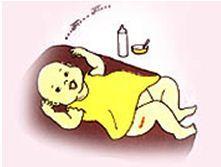
3 Months to 6 Months
Auditory Response: The child normally recognises its mother’s voice i.e. if she is crying she usually stops when she hears her voice.
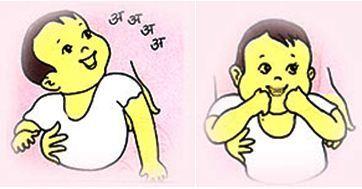
He/She smiles when spoken to, stops playing and appears to listen to sounds, especially when pleasant and new sounds are made. For example – sound of new toys.
Speech and Language Development: She enjoys babbling i.e. she repeats a chain of sounds like da..da..ba.. ba

She responds to her mother’s voice by making pleasurable sounds.
6 Months to 9 Months
Auditory Response: Your child will turn his head towards the sound source and his interest in listening to sources of new sounds continues.
Speech and Language Development: Your child will enjoy making different sounds and continue to babble. He tries to imitate if you make sounds resembling those made by him.
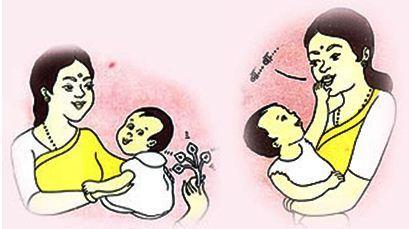
He is able to vocalise emotional satisfaction or dissatisfaction. That is when he is happy, his smile is accompanied by vocalisation (voice) and when he is unhappy or uncomfortable he usually cries.
9 Months to 18 Months
Auditory Response: Your child will look up when you call.
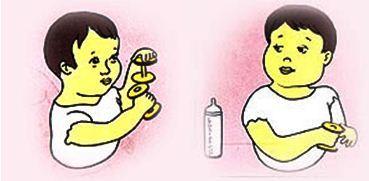
He understands words like ‘no’. He will also respond to simple commands like ‘open your mouth’, ‘close your eyes’ and like–wise.
Speech and Language Development: He starts using his voice for getting attention. His first word is usually heard at any time within this period. He will imitate some of the sounds that you make.
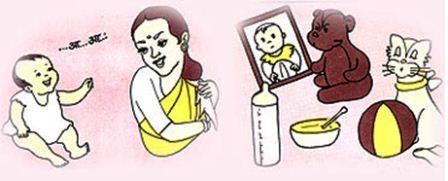
By 18 months your child's vocabulary (use of meaningful words) increases gradually.
18 Months to 2½ Years
Auditory Response: Your child will begin to respond to requests like ‘give me’ He can also respond to commands like 'bring the ball' and he throws it when asked to.
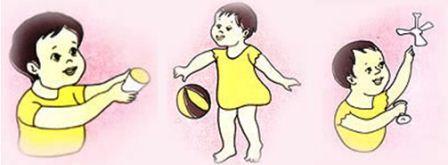
He can point to things that are named.
Speech and Language Development: He is able to combine words into sentences for example ‘papa come’.
He can name a few common animals, fruits etc.
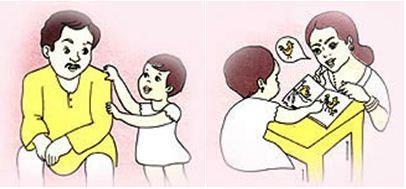
He can name objects and describe them by using adjectives and adverbs like big\more\nice.
Remember, in some children the hearing loss may also be accompanied by other deformities, such as cleft lip & palate (opening in the roof of the mouth), low set ears, absence of outer ear etc. Some children may not be able to give age appropriate responses to sounds due to other problems such as delayed motor milestones.
When should you be concerned that your child could be having a hearing problem?
- If you find any delay or absence of response to sounds or delay in the development of speech (as mentioned in subsequent parts of this text), your first step should be to seek professional help immediately.
Remember
- A hearing loss need not always be present at birth. It can set in at any age. Unlike other handicaps (visual/orthopedic) hearing impairment is not visible externally. We suggest that you should be alert and assess your child periodically.
Source: Ali Yavar Jung National Institute for the Hearing Handicapped
Last Modified : 2/12/2020
